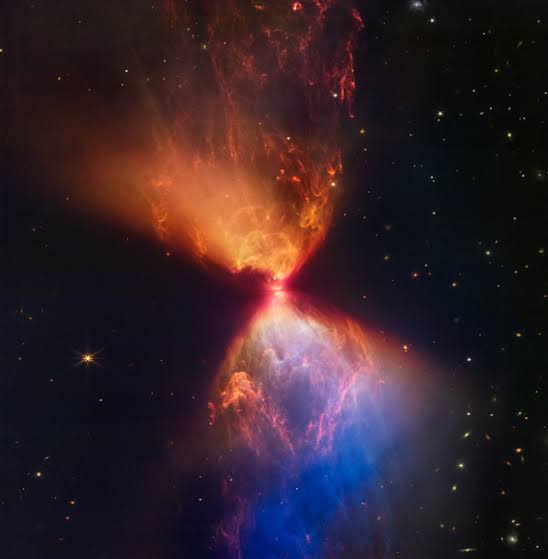On Wednesday, the James Webb Space Telescope unveiled its most recent depiction of celestial grandeur, a spectral hourglass of orange and blue dust being ejected from a developing star at its center.

According to a joint statement from NASA and the European Space Agency, the vibrant clouds were never before seen because they can only be seen in infrared light. Webb’s Near-Infrared Camera (NIRCam) captured them.
The L1527
The edge of a revolving disc of gas at the hourglass’ neck obscures the protostar L1527, an extremely young star. Nevertheless, light leaks out from the disk’s top and bottom, illuminating the hourglass-shaped clouds.
In this infrared image, the protostar’s ejections have cleaned out cavities above and below it, whose boundaries glow orange and blue. CSA, STScI, NASA, and ESA. J. DePasquale, A. Pagan, and A. Koekemoer (STScI) performed the image processing.
According to the statement, the clouds are the result of debris blasted from the star colliding with nearby matter. It said, “The dust is thinnest in the blue areas and thickest in the orange areas.
In the end, it said, “this perspective of L1527 offers a window into what our Sun and Solar System appeared to be like in their infancy.”
Conclusion
The protostar is situated in the Taurus molecular cloud, a stellar nursery that is 430 light years away from Earth and is home to hundreds of almost formed stars.
The most potent space telescope ever created, Webb, has been in operation since July and has already unlocked a wealth of ground-breaking data and breathtaking photos. The goal is that it will usher in a new era of discovery.
The $10 billion telescope’s primary objective is to examine the life cycle of stars. Exoplanets, or planets outside of the Solar System, are another area of primary study interest.
